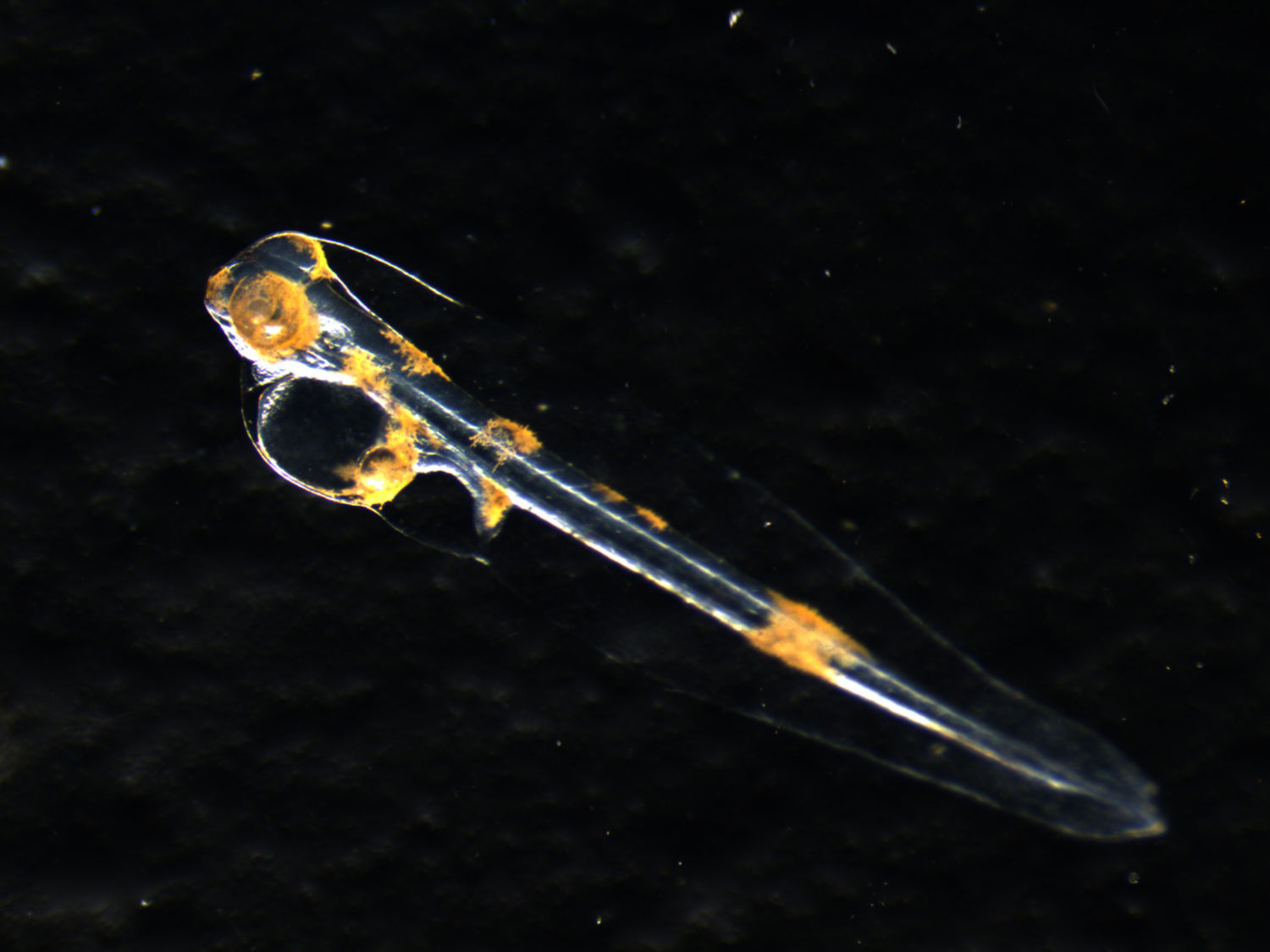Fish babies are nerve-racking

When you talk about artificial upwelling, you will sooner than later talk about fish production fueled by the nutrient-rich deep water. The critical bottleneck for fish production is the survival and growth of the fish larvae, which need to learn to feed just a few days after hatch and if they don´t they starve and die. It is quite straight-forward that fish larvae would benefit from artificial upwelling if it increases the amount of food that is available for them in the first weeks after hatch. The question remaining is, under which artificial upwelling scenario does the highest fish production occur and which scenario is the most efficient in terms of energy transfer from the base of the food web, the phytoplanktonic algae, via the zooplankton such as copepods, up to the fish larvae. To test these scenarios in practice we wanted to introduce fish larvae to the “art-up”-mesocosms which proved to be an enormous challenge.
Most fish around the Canary Islands have their spawning times, meaning their reproductive phase, in the rather windy season in January/ February, when we don’t want to have the mesocosms in the open ocean. We learnt already how devastating these strong winds and waves can be! Therefore, January/February was not an option. So what to do? Luckily, we have great colleagues (Laura, Susana, Pedro, Ana, Sara etc.) at EPPO in Olhão - Portugal, who are experts in the aquaculture of sparid fishes, such as the white seabream also called Sargo (Diplodus sargus). Our colleagues are able to produce fish larvae even “off-season” by decreasing the water temperature and thus simulating winter time is coming meaning time to reproduce for the Sargo. To prepare everything before the mesocosm study even started, Micha, Nico and myself went to Olhão in spring 2018 to perform some experiments on temperature tolerance and transport mortality, to gather knowledge on how we could ship fish larvae to Gran Canaria for the KOSMOS study.
Still we had to learn more when we arrived here! For the last weeks we have been waiting for news from Portugal that spawning has started. But this year had a crazy summer and far too warm autumn, the fish didn’t feel like spawning - You cannot foresee nature… Now, the mesocosms are up and running again (great thanks to the divers and the technical team), protozoan and zooplankton nauplii production, first food for the larvae, are picking up and still no good news from Olhão. It is quite a nerve-racking experience. All is ready, but there is nothing one can do - just wait! Very difficult for a rather impatient person, like myself! Then, suddenly, the email arrives - we have eggs! Now, the next steps have to be taken. Contact the transport company “Flying sharks” and prepare the paper work to get the fish larvae to Gran Canaria, which unfortunately is not regarded to be Europe in relation to transport and import rules.
“Flying sharks” picks up our babies on Thursday evening in Olhão, drives them for 4 hours to the airport in Lisbon and leaves them there to be put on the plane the next morning to arrive at Las Palmas at 13:30. We are getting nervous, how will these small, 3 mm tiny creatures manage the long trip. Will the temperature be o.k.? Will we get them in good shape to introduce to the mesocosms? Then the next problems come. The customs in Las Palmas are missing some paper work; we cannot get the larvae without certain signatures. Luckily, we have the support of Patricia, Nico and Marta who spend all of Friday on the phone and email to solve the problems. I’m not really able to concentrate on anything else. Just waiting and hoping to get the larvae out until Friday evening, so that they don’t spend the weekend in the freight terminal and die. At 19:00 after 24 hours on the go, we receive the box!! Back at PLOCAN first inspection looks good, but the water is too cold. We need to keep them until Saturday afternoon in the lab to slowly acclimate them to 21°C, the same temperature as the Atlantic and mesocosms have at the moment.
The next morning, they are ready to be distributed to transport containers, one for each mesocosm and one to take back and count later as a reference. We place the containers on our working boat Wassermann and bring them to the mesocosms in Gando Bay. It is quite rough, but we drive slowly and carefully and finally release the larvae into the mesocosms.
When we returned we counted the reference container and realized that the numbers of larvae introduced are lower than we had hoped and planned for, but we have to take what we get.
Now we have to wait again - How will they survive? Will they find enough of the right food? So, far we haven’t found too many dead larvae, but whether we will be successful or not will only be clear, when we fish out the mesocosms at the end of the experiment. Again, fish larvae enthusiasts have to wait and be patient!
To increase our chances of getting more survivors and to analyze whether artificial upwelling transfers to the level of the fish, we have decided to go for a second introduction. The next transport is organized and on it´s way... If you are interested to see how that went, kept following our blogs.





